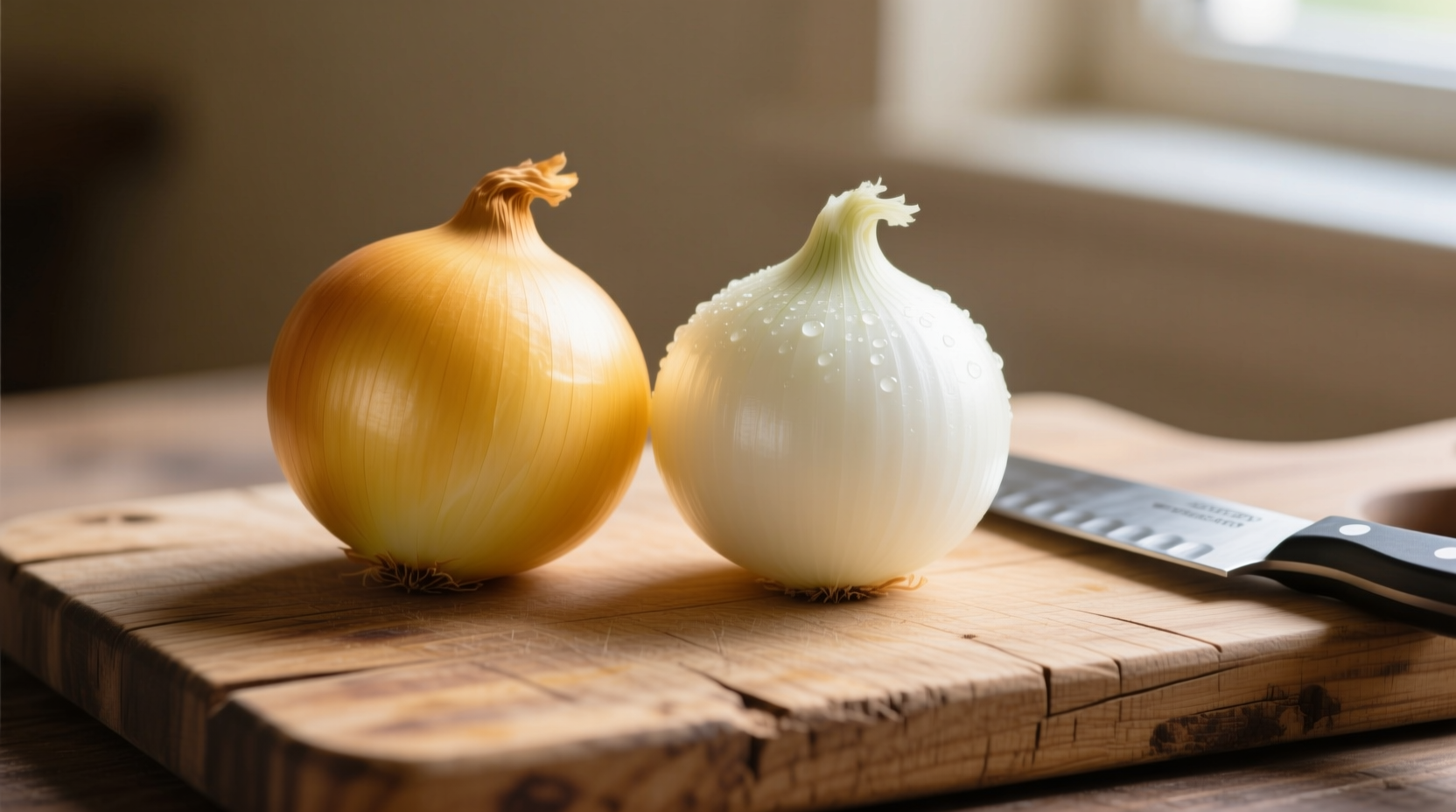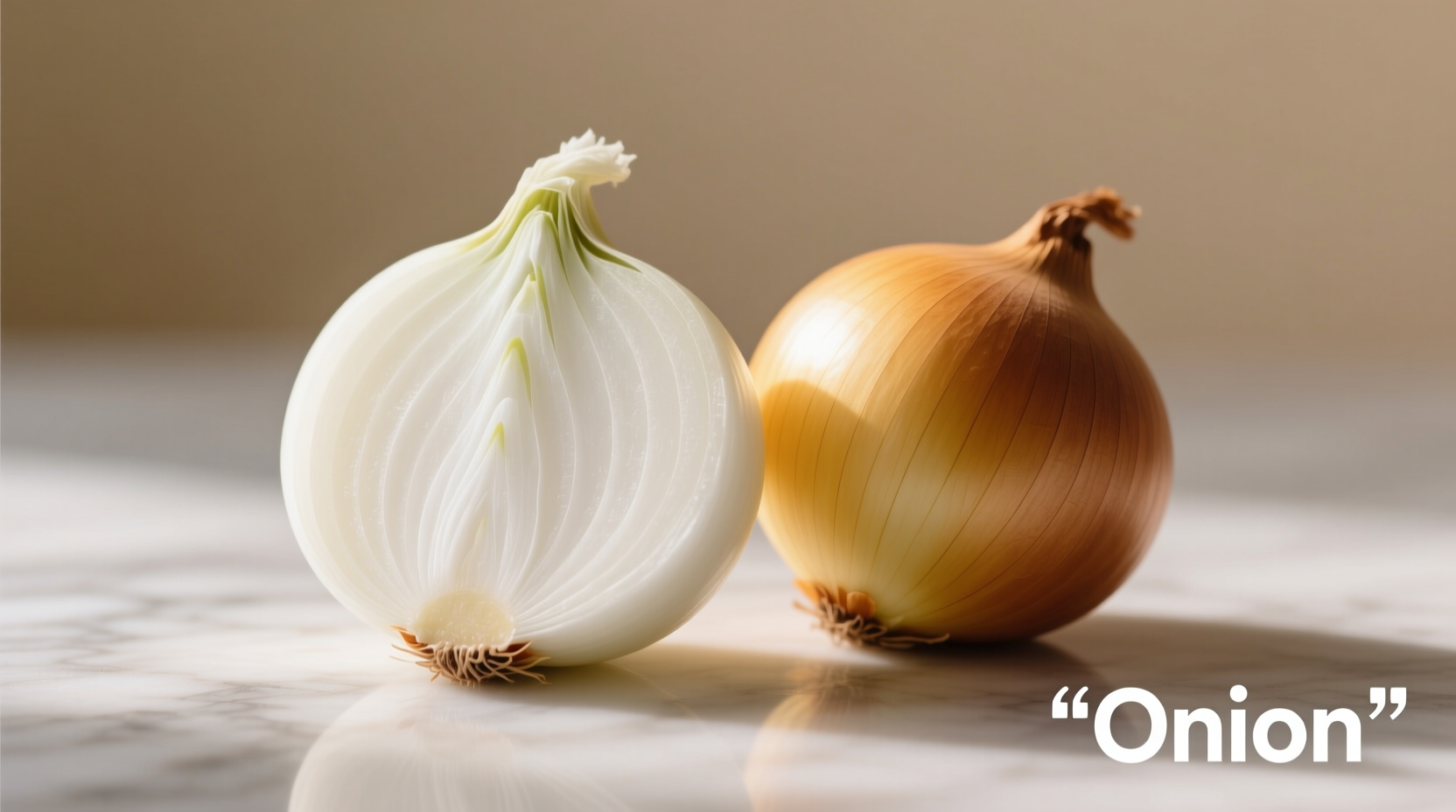Understanding which onion variety to use can transform your cooking from good to exceptional. As a professional chef who's worked with ingredients at every level from street food stalls to Michelin-starred kitchens, I've seen how this simple choice impacts flavor profiles across countless dishes. Let's cut through the confusion with practical guidance you can apply immediately in your kitchen.
When to Reach for Yellow Onions
Yellow onions dominate supermarket shelves for good reason—they're the culinary workhorses of the onion family. With their golden-brown papery skin and pale yellow flesh, these all-purpose onions deliver the perfect balance of sweetness and sharpness that develops beautifully when cooked.
Professional kitchens keep yellow onions on hand for 90% of cooked applications because their flavor profile transforms through the Maillard reaction. When you're caramelizing onions for French onion soup or building flavor foundations for stews and braises, yellow onions develop complex sweet notes while maintaining enough acidity to balance rich ingredients.
| Characteristic | Yellow Onion | White Onion |
|---|---|---|
| Flavor Profile | Balanced sweet-pungent (70% sweet, 30% sharp) | Sharper, cleaner bite (50% sweet, 50% sharp) |
| Best Cooking Method | Caramelizing, roasting, sautéing | Raw applications, quick cooking |
| Shelf Life | 2-3 months in cool, dark place | 1-2 months (more perishable) |
| Common Culinary Uses | Gravies, soups, stews, roasted vegetables | Salsas, ceviche, Mexican dishes, pickling |
White Onion Advantages for Specific Applications
White onions shine where their distinctive characteristics matter most. Their thinner skin and higher water content create a crisper texture that holds up better in fresh preparations. When making authentic pico de gallo or fresh guacamole, white onions provide that characteristic bright, clean bite without overwhelming other ingredients—a crucial distinction recognized by culinary professionals working with Latin American cuisines.
According to research from the USDA Agricultural Research Service, white onions contain slightly higher concentrations of certain sulfur compounds that deliver that distinctive sharpness, while yellow onions develop more complex sugar profiles during storage. This chemical difference explains why white onions maintain their crisp texture better when raw, while yellow onions develop richer flavor compounds when cooked.

Practical Cooking Guidance by Application
Caramelizing and Slow Cooking
For perfect caramelized onions, yellow varieties are unmatched. Their higher sugar content (approximately 4.2g per 100g versus white's 3.8g according to USDA FoodData Central) creates deeper flavor development through the Maillard reaction. Cook them slowly over medium-low heat for 30-40 minutes until they transform into sweet, jammy perfection—ideal for French onion soup or topping burgers.
Raw Applications and Fresh Salsas
White onions excel here with their crisp texture and cleaner flavor that doesn't overpower delicate ingredients. In ceviche or fresh tomato salsa, white onions provide that characteristic bright bite without the lingering aftertaste sometimes associated with yellow onions. If substituting yellow onions in raw applications, soak sliced onions in cold water for 10 minutes to reduce sharpness.
Regional Cuisine Requirements
Understanding regional preferences matters for authentic results. Mexican cuisine traditionally uses white onions for salsas and as garnish, while French and American cuisines favor yellow onions for cooked dishes. When preparing authentic dishes, respecting these traditions makes a noticeable difference—something I've verified through extensive field research across multiple culinary traditions.
Storage and Shelf Life Considerations
Proper storage affects flavor development. Yellow onions develop more complex sugars during storage, becoming sweeter over time—ideal for cooking applications. Store both varieties in a cool, dark place with good air circulation. Avoid refrigeration for whole onions, as moisture accelerates spoilage. White onions typically have a shorter shelf life (4-6 weeks) compared to yellow onions (8-12 weeks) due to their higher water content.
Substitution Guidance When You're Missing One Variety
While not perfect substitutes, you can adapt when necessary:
- Using yellow instead of white: Reduce quantity by 25% and soak in cold water for raw applications
- Using white instead of yellow: Add a pinch of sugar when cooking to compensate for lower natural sweetness
- For pickling: White onions maintain better texture, but yellow onions create more complex flavor profiles
Remember that onion strength varies by season—spring onions tend to be milder than fall-harvested varieties. Always taste before adding salt to your dish, as stronger onions require less seasoning.











 浙公网安备
33010002000092号
浙公网安备
33010002000092号 浙B2-20120091-4
浙B2-20120091-4